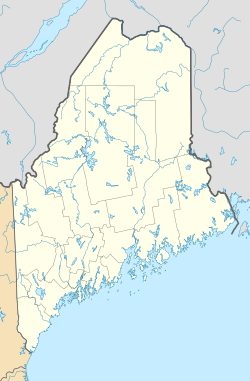Ntolonapemk, Eastern Surplus Superfund Site facts for kids
Quick facts for kids |
|
|
Ntolonapemk, Eastern Surplus Superfund Site
|
|
| Nearest city | Meddybemps, Maine |
|---|---|
| Area | 3 acres (1.2 ha) |
| NRHP reference No. | 01000819 |
| Added to NRHP | August 8, 2001 |
Ntolonapemk is an ancient archaeological site in Meddybemps, Maine. This small town is located in Washington County, Maine. The site is also known as the Eastern Surplus Company Superfund Site. It is found near where Meddybemps Lake flows into a river.
Ntolonapemk is special because it is one of the main inland places where people lived long ago in Washington County. It shows signs of being used for over 8,000 years! In 2001, this important site was added to the National Register of Historic Places. This list recognizes places that are very important to the history of the United States.
Contents
What is Ntolonapemk?
The name "Ntolonapemk" was given by the local Passamaquoddy tribe. It means "Our Relative's Place." This shows how important the site was to them. The site is on the south shore of Meddybemps Lake. It is right where the lake flows into the Dennys River.
A Place of History and Discovery
For a long time, local people knew this area was special. They often found small stone tools and other items there. Starting in 1946, a company called Eastern Surplus used the site. They stored extra military items there.
In the 1980s, the site was found to have some pollution. It was then named a Superfund site. This means it was a place needing a special cleanup. The cleanup work started in 1998.
State archaeologists first looked at the area in 1967. They did more detailed digs in 2000 and 2001. These digs helped them learn a lot about the site's past.
Ancient Travel Route
Ntolonapemk was located along an old travel path. This path was used by Native people for thousands of years. It connected Passamaquoddy Bay to the inland parts of Maine. Because of its location, people stopped here often.
Archaeologists found signs that people lived at Ntolonapemk for a very long time. This includes periods from about 8,000 BCE (Before Common Era). People continued to use the site even after Europeans arrived in the area.
What Was Found at the Site?
More than 200 features have been discovered at Ntolonapemk. These include many fire pits, which were used for cooking or warmth. There were also garbage pits and storage pits.
Animal Bones and Food
Archaeologists found over 70,000 animal bones at the site. Most of these bones were from animals eaten by the people who lived there. This tells us a lot about their diet.
Many bones were from alewife and other small fish. These fish swim from the ocean into fresh water to lay eggs. They were a very important food source for people living at Ntolonapemk. These fish bones were found from the earliest times the site was used, all the way to later periods.



